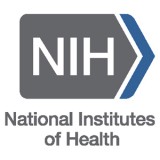NIH Statement on World AIDS Day 2014

Remarkable progress has been made in the fight against HIV/AIDS since the first annual World AIDS Day was commemorated 26 years ago. Yet, we are still far from achieving our goal of a world without AIDS.
In 2013, more than 2 million people globally became newly infected with HIV, and 1.5 million people died from AIDS-related causes. The number of new HIV infections and AIDS-related deaths has dropped by more than one-third in the past decade largely because of advances in HIV prevention and greater access to antiretroviral therapy. However, far too many adults and children continue to become HIV-infected and die from the effects of the virus, including here in the United States. On World AIDS Day, the National Institutes of Health reaffirms its commitment to finding new tools for preventing HIV infection (including a vaccine), improved treatments, and, ultimately, a cure.
Thanks to the work of NIH-funded researchers and partners in academia and the biotechnology and pharmaceutical industries, we now have more than 30 lifesaving antiretroviral drugs and drug combinations for treating HIV infection. Programs like the President’s Emergency Plan for AIDS Relief (PEPFAR) have greatly increased access to these HIV medicines; however, they remain out of reach for many who need them. Antiretroviral medications not only have lifesaving therapeutic value; they also help prevent HIV transmission by lowering virus levels in infected individuals. As an example, an NIH-funded study, called PROMISE in Uganda and Kenya is examining whether improved access to antiretroviral treatment for infected individuals can improve the overall health, education and economic productivity of the community.
Additionally, NIH continues to investigate new HIV prevention tools for those most at risk for HIV infection, including heterosexual women in high-prevalence settings, and men who have sex with men. For example, the ASPIRE clinical trial, which launched in 2012, is testing whether a vaginal ring containing the experimental antiretroviral drug dapivirine can prevent HIV infection in women. Results from the trial are expected next year. The Phase 2 MTN 017 clinical trial, which launched last year, is examining the safety and acceptability of a rectally applied gel containing the antiretroviral drug tenofovir for men who have sex with men.
While we have effective treatment and prevention tools that have made a significant impact in the fight against HIV/AIDS, the goal to end AIDS would likely be achieved faster and be more sustainable with an effective vaccine or cure. However, researchers must learn a great deal more to develop either intervention.
With regard to vaccines, scientists are making progress in the laboratory and in animal studies to better understand the human immune responses and other factors needed to develop a protective HIV vaccine. In 2014, NIH-funded researchers described the regions of HIV where antibodies bind to block infection and found the mechanism responsible for stabilizing key HIV proteins and hiding sites where some HIV neutralizing antibodies attach themselves. Furthermore, researchers continue to learn more details that may explain why the RV 144 investigational HIV vaccine regimen provided a modest level of protection against HIV acquisition among 16,000 Thai adults. For example, by looking at serum samples from the RV 144 participants, scientists have identified previously unrecognized attributes of the antibodies that may have helped protect certain vaccinees.
As researchers continue to glean key information from the RV 144 study, efforts are under way to test a modified and potentially improved version of the same investigational vaccine regimen in South Africa beginning in 2015. When tested among a small number of healthy South Africans in a Phase 1 clinical trial called HVTN 097, the RV 144 investigational vaccine regimen proved safe and elicited comparable if not stronger immune responses than among the Thai participants.
An important goal for HIV/AIDS research continues to be finding a cure, whether by eradicating the virus from an infected individual or maintaining sustained virologic remission in the absence of therapy in a substantial portion of people infected with HIV. To that end, this year, NIH issued several major requests for applications designed to fund innovative approaches to an HIV cure. However, the field is still in the early discovery phase and is facing a number of challenges. A major challenge is HIV’s ability to rapidly establish hidden reservoirs in the body. NIH-funded scientists are working to characterize and quantify these reservoirs and develop biomarkers to identify and track their development.
Additionally, researchers are pursuing a number of strategies designed to eradicate the HIV reservoir in the body, such as activating dormant infected cells to make the virus vulnerable to antiretroviral drugs, using gene therapy to make a patient’s cells resistant to HIV infection, and using stem cell transplants. To date, the science suggests that very early antiretroviral treatment, given when the HIV reservoir in the body is small, could be crucial to eradicating the virus in an infected individual or making it more likely for an infected individual to remain off antiretroviral treatment without evidence of viral load or anti-HIV immune response (called sustained virologic remission). One case that supports this idea: the Mississippi child—an HIV-infected child who was treated within 30 hours of birth and continued on treatment for 18 months and then remained off treatment for 27 months without evidence of viral load or anti-HIV immune response until the virus rebounded. A new NIH-funded clinical trial, called IMPAACT P1115, is attempting to address critical questions raised by that case, including the immunologic and other factors that keep the virus from rebounding, triggers for viral rebound, and the cell type and body compartment from which HIV rebounds.
On this World AIDS Day, we acknowledge the extraordinary achievements that have been made through the dedication of scientists, health care professionals, and clinical trial participants and look ahead to achieving an end to the HIV/AIDS pandemic.Media inquiries can be directed to the NIAID Office of Communications at 301-402-1663, niaidnews@niaid.nih.gov.